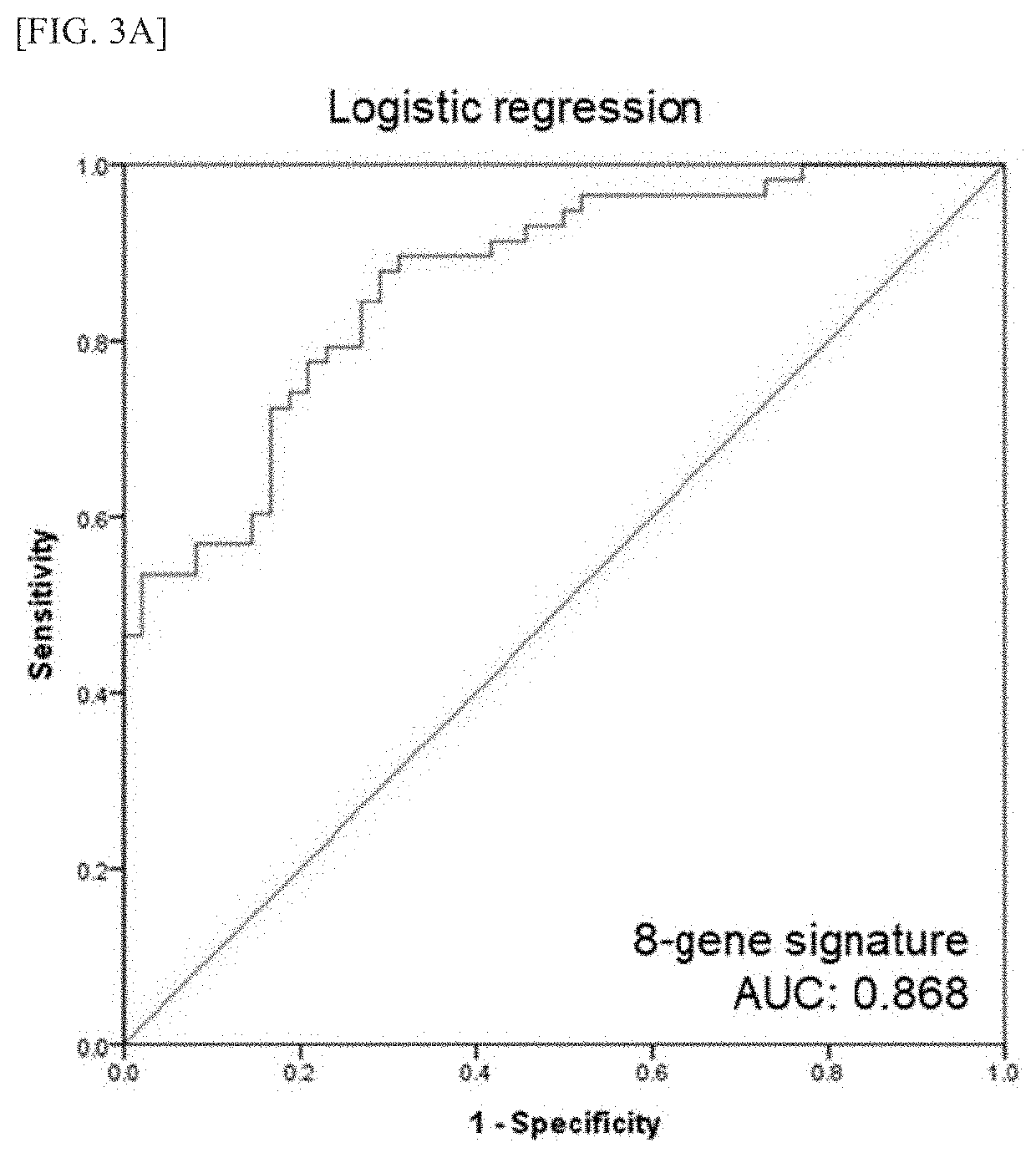Method of diagnosing and treating acute rejection in kidney transplant patients
a kidney transplant and acute rejection technology, applied in the field of acute rejection diagnosis and treatment in kidney transplant patients, can solve the problems of uremic symptoms, loss of function of the transplanted kidney, and the inability of the immune system to distinguish foreign proteins such as bacteria or viruses from the transplanted kidney tissue,
- Summary
- Abstract
- Description
- Claims
- Application Information
AI Technical Summary
Benefits of technology
Problems solved by technology
Method used
Image
Examples
example 1
ation of Biomarker Candidates for Diagnosing Kidney Transplant Rejection Using Bioinformatics Technique
[0083]Urinary exosome-derived miRNA biomarker candidates for diagnosing kidney transplant rejection were identified using two methods based on bioinformatics techniques.
example 1-1
sing Database
[0084]First, miRNA target databases were downloaded from miRTarBase, TargetScan, and microRNA. It is known that the microRNA and TargetScan databases include predicted targets by a calculation method, and the miRTarBase database includes only experimentally validated targets. The databases were used to select target pairs having the highest score from a plurality of target pairs consisting of one miRNA and a plurality of genes, and 1,110,357 target pairs with respect to a total of 1,802 miRNAs were primary selected.
[0085]The primary selected target pairs were integrated to display the score of each miRNA target database. If target pairs were not in the corresponding miRNA target database, their score was set to 0, and target pairs included in both microRNA and TargetScan or included in miRTarBase were selected as final targets. 405,092 target pairs with respect to 1.760 miRNAs were secondary selected.
[0086]Genes included in the secondary selected target pairs were subje...
example 1-2
sing GSEA (Gene Set Enrichment Analysis)
[0088]miRNA GSEA (Gene set enrichment analysis) was performed using MSigDB miRNA gene sets (C3) for the four rejection mRNA data sets (GSE9489, GSE25902, GSE36059, and GSE50058) which were used in the meta-analysis of Example 1-1.
[0089]As a result, gene sets with FDR<0.1 were identified only in GSE25902, thereby identifying biomarker candidates showing high levels of NES among miRNAs (FDR<0.1) of which expression levels were found to be significantly high in GSE25902 (Table 2).
TABLE 2Biomarker candidatesmiRNAsizeESNESNOM p-valFDR q-valPWER p-valMIR-186230−0.4363128−1.678600.0059523810.099812970.203MIR-324-3P81−0.4077800−1.676390.0207900200.092642620.207MIR-518A-2178−0.4638104−1.672440.0141700400.090749960.214MIR-154, MIR-48755−0.5133539−1.670190.0326530600.085585520.216MIR-373197−0.4090277−1.660330.0039761430.088203970.230MIR-3161−0.4981911−1.654830.0159362550.086745680.238
[0090]5 miRNAs with low FDR values (miR-335, miR-124, miR-146a-5p, miR-...
PUM
| Property | Measurement | Unit |
|---|---|---|
| swelling | aaaaa | aaaaa |
| time | aaaaa | aaaaa |
| chemiluminescent | aaaaa | aaaaa |
Abstract
Description
Claims
Application Information
 Login to View More
Login to View More - R&D
- Intellectual Property
- Life Sciences
- Materials
- Tech Scout
- Unparalleled Data Quality
- Higher Quality Content
- 60% Fewer Hallucinations
Browse by: Latest US Patents, China's latest patents, Technical Efficacy Thesaurus, Application Domain, Technology Topic, Popular Technical Reports.
© 2025 PatSnap. All rights reserved.Legal|Privacy policy|Modern Slavery Act Transparency Statement|Sitemap|About US| Contact US: help@patsnap.com



